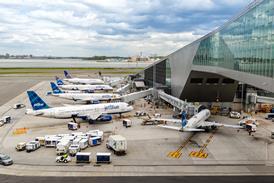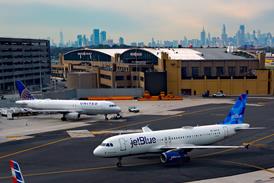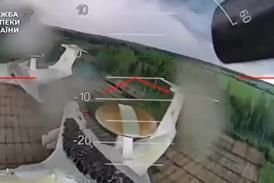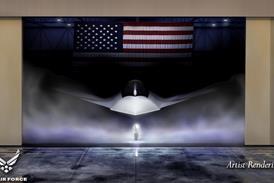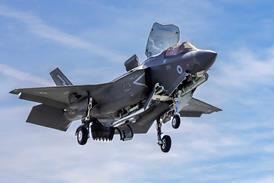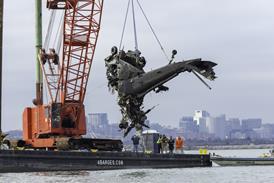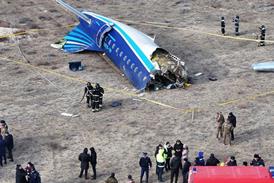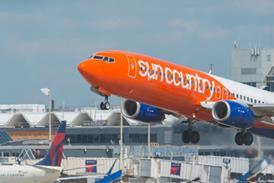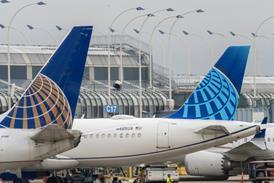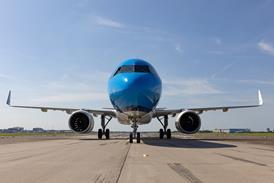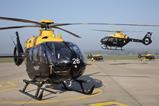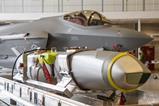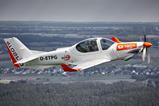Encouraged by what it describes as strong and growing market interest, Saab has outlined plans to significantly boost its production capacity for the GlobalEye airborne surveillance system.
The Swedish company has so far delivered five of the heavily adapted Bombardier Global 6000s to launch operator the United Arab Emirates, with three more on order for its home nation.
“GlobalEye looks very promising when it comes to the Nordic perspective, and the discussions we have with France,” chief executive Micael Johansson said during Saab’s Capital Markets Day event in Karlskoga on 27 May.

The company has previously proposed building on Sweden’s order – which covers deliveries from 2027 – by providing a pooled fleet of the assets to also help protect Denmark, Finland and Norway, plus potentially the Baltic states.
France, meanwhile, has evaluated the system as it considers its replacement options for an aged fleet of Boeing 707-based E-3F airborne early warning (AEW) aircraft.
“Our planning right now is to be able to deliver up to four [GlobalEye] systems per year in the 2030 timeframe,” says Carl-Johan Bergholm, the head of Saab’s Surveillance business unit. “If we can’t reach those expectations then we don’t have anything to talk about with our customers,” he adds.
Saab sources airframes from Bombardier before modifying them for the surveillance role at its Linkoping site – most visibly through the addition of its Erieye ER active electronically scanned array radar, housed within a canoe fairing mounted above the fuselage. Any future customers will receive jets in the latest Global 6500 standard.
“Securing that [conversion] capacity is all about controlling what we sell, so that we don’t have to redo everything [for each new buyer],” Bergholm says. “There are going to be customer adaptations in all of these contracts that we are in discussion about, but we need to have an architecture that we can scale and build on.
“We need to make sure that we have efficient project execution, but also we are making sure that we have the supply chain lined up to support this vision,” he says.
“NATO needs to replace [its E-3A fleet], new countries need to get this capability – it is really a game changer when it comes to your ability to control air assets,” he says.
“Our interpretation of what is needed is for us to ramp up our delivery capacity to four systems per year, and if we need to scale it up even further, we will make those decisions.”
Its next deliveries will be made to Sweden, which will field the type as a replacement for two Erieye radar-equipped Saab 340s already donated by Stockholm to Ukraine.
“This is a unique capability in the European context, which is gathering a lot of attention… in what we can provide to NATO,” he notes. Saab is pitching a dedicated AEW version of the GlobalEye as a potential solution for the Alliance Future Surveillance and Control requirement, although the military grouping has so far backed a possible future acquisition of the Boeing 737NG-based E-7A.
The in-service examples now flown by the UAE are able to perform the simultaneous surveillance of airborne, maritime and land-based threats.
Saab is also eyeing a potential future sale to Canada. At the annual CANSEC defence and security conference in Ottawa on 28 May, the company said its partnership with Canadian airframer Bombardier would make a compelling bid for the airborne early warning and control acquisition announced by Ottawa under a 2024 national defence strategy.
“With Bombardier’s world-class aircraft made right here in Canada, and Saab’s proven expertise in radar development and advanced surveillance technologies, we believe GlobalEye represents a unique opportunity to deliver unmatched capability while growing Canada’s aerospace and defence sectors,” Saab says.
Story updated on 28 May with GlobalEye proposal to Canada.



